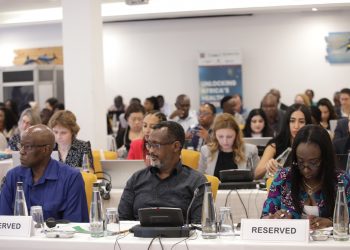A new report published in The Lancet Global Health shed light on the ongoing crisis of medical oxygen shortages, warning that millions of people worldwide lack access to this life-saving resource.
The report, authored by a team of global health experts, reveals that while over 370 million people require oxygen for medical care each year, fewer than one in three actually receive it.
The shortage is particularly severe in low- and middle-income countries (LMICs), where inadequate access to medical oxygen continues to jeopardize lives.
“The need is very urgent,” said Dr. Hamish Graham, a pediatrician and lead author of the report. “We know that there are more epidemics coming, and there’ll be another pandemic, probably like COVID-19, within the next 15 to 20 years.”
The crisis comes at a time when global health systems are under strain due to the lingering impacts of the COVID-19 pandemic, economic downturns, and rising debt levels.
Hospitals in many countries previously relied on third-party vendors to meet their oxygen demands, but the pandemic led to widespread hoarding and black-market sales, exacerbating the crisis.
To bridge the oxygen gap, experts estimate that a $6.8 billion annual investment is needed.
However, recent policy shifts, such as the Trump administration’s freeze on foreign aid programs, have made securing these funds even more difficult.
“Within the current climate, that’s obviously going to become a bit more of a challenge,” said Carina King, an infectious disease epidemiologist at the Karolinska Institute and co-author of the report.
Beyond oxygen itself, medical experts emphasize the urgent need for high-quality pulse oximeters, which measure blood oxygen levels and help determine when patients require supplemental oxygen.
According to the report, these devices are only available in 54percent of general hospitals and 83percent of tertiary care hospitals in LMICs. Even when available, malfunctions and shortages are common.
“In these countries, pulse oximetry is performed for only 20percent of patients at general hospitals and is almost never used at primary healthcare facilities,” Graham explained. “The greatest inequities are found in small and rural government health facilities, particularly in Sub-Saharan Africa.”
Experts urge governments to take immediate action by forming public-private partnerships to design sustainable oxygen-delivery systems.
The report calls for the establishment of a governance structure to support the newly launched Global Oxygen Alliance (GO₂AL) and recommends replenishing The Global Fund with a dedicated oxygen access mandate.
With the demand for medical oxygen expected to rise due to factors such as poor nutrition, smoking, aging populations, and climate change, the urgency to address the issue has never been greater.
Respiratory illnesses linked to infectious diseases, air pollution, and extreme heat continue to drive the need for oxygen, particularly in vulnerable populations.
The report also underscores the importance of National Medical Oxygen Plans to ensure long-term investment and coordinated service delivery.
Currently, fewer than 30 countries have such plans in place, and all governments are encouraged to develop one by 2030.
To ensure effective implementation, the report introduces new tools such as the 10 Oxygen Coverage Indicators and the Access to Medical Oxygen Scorecard (ATMO₂S).
These tools will help governments assess their national oxygen systems and report progress in implementing the World Health Organization’s (WHO) Oxygen Resolution.
Additionally, experts stress the need for closer collaboration between the medical oxygen industry, national governments, and global health agencies. They recommend that companies set specific oxygen access targets and publicly track progress, similar to pharmaceutical industry standards.
As the world prepares for future health crises, experts emphasize that investing in medical oxygen infrastructure is not just a matter of public health—it is a global necessity. Without immediate action, millions will continue to suffer from preventable deaths due to a lack of access to oxygen.
Governments, health organizations, and private sector partners must come together to ensure that no patient is left gasping for breath due to systemic failures in oxygen delivery. The time to act is now.















